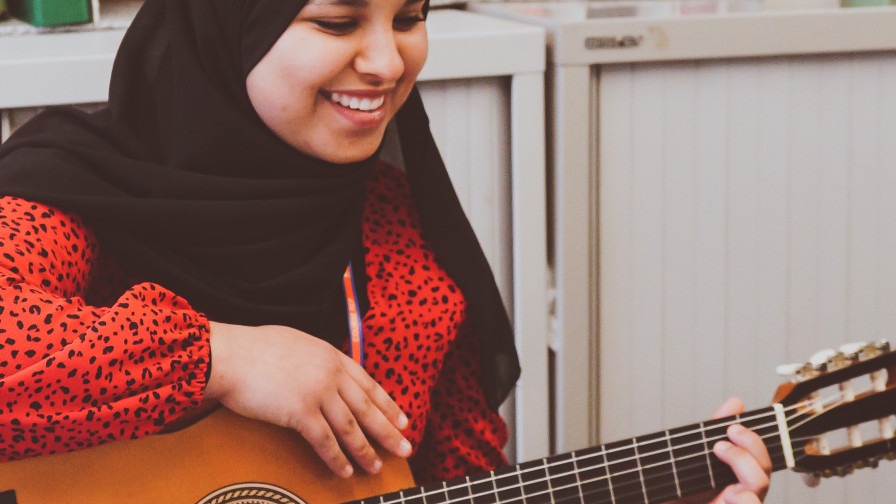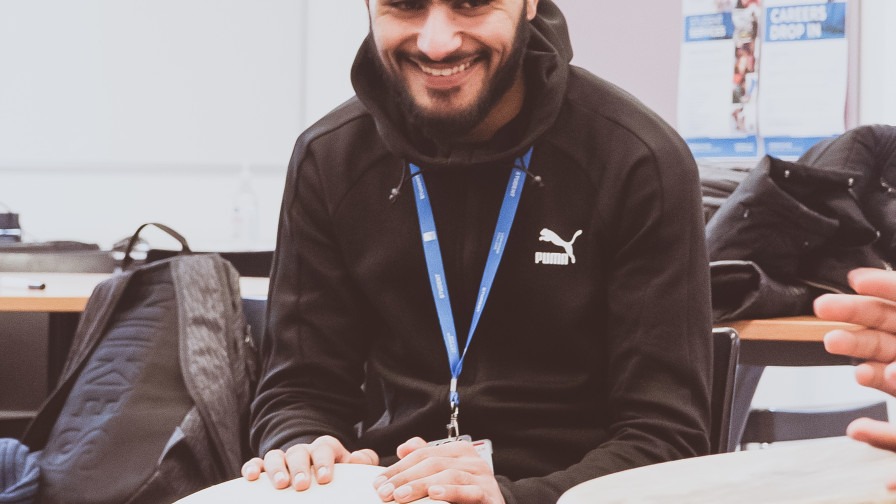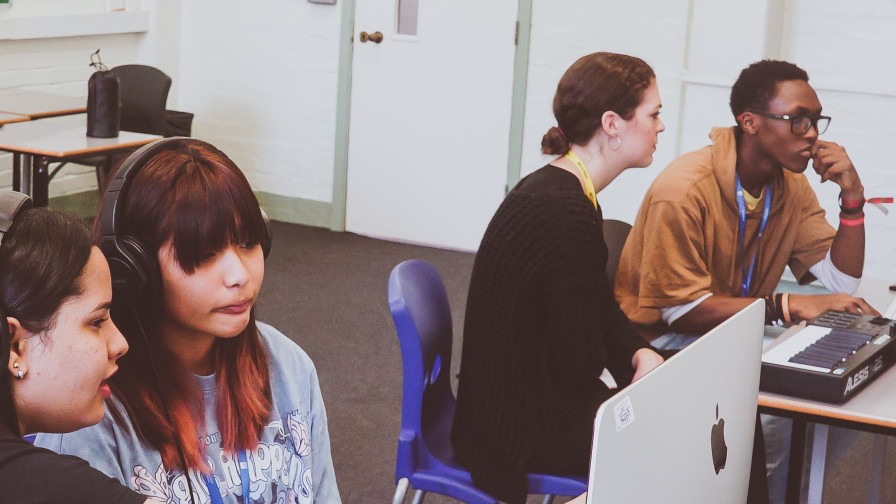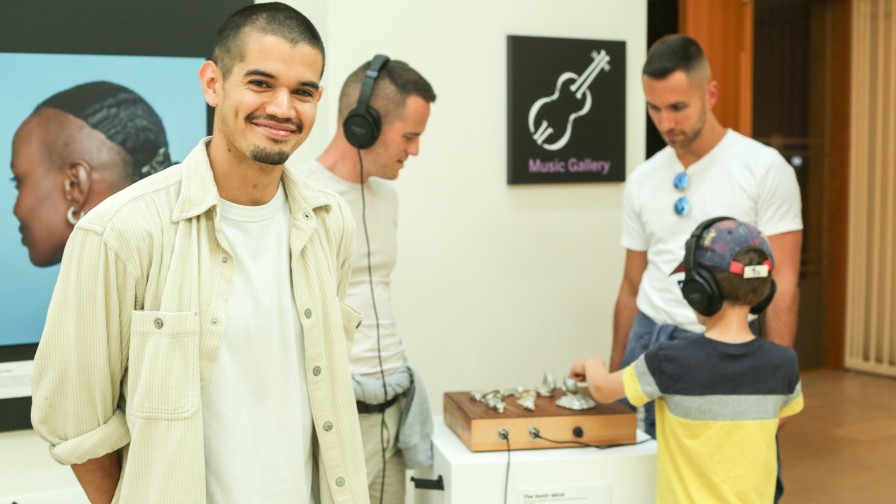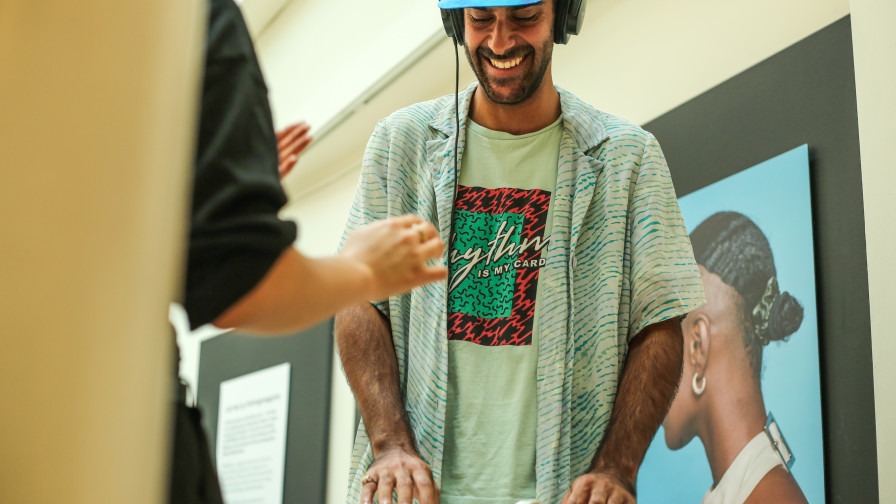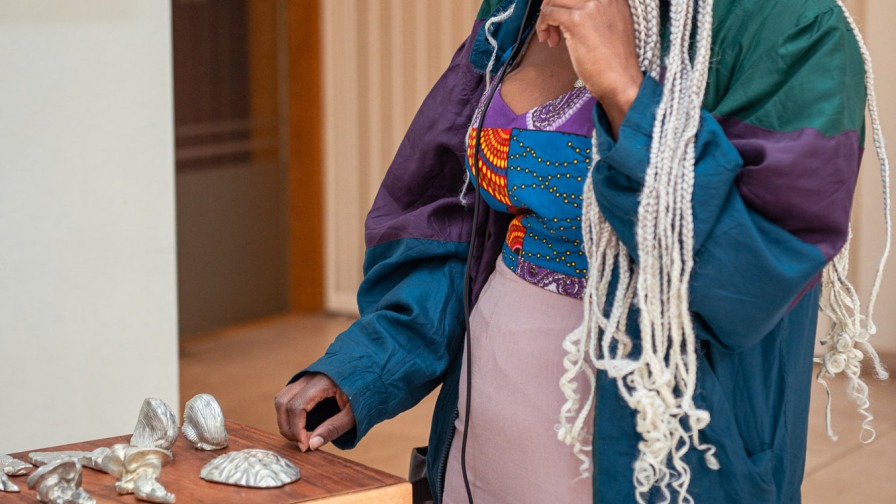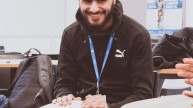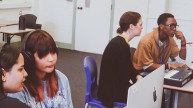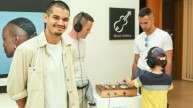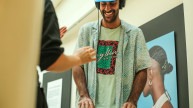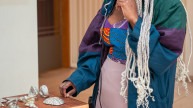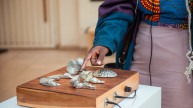Evaluating Music & Mental Health - Our Learning from Sonic Minds
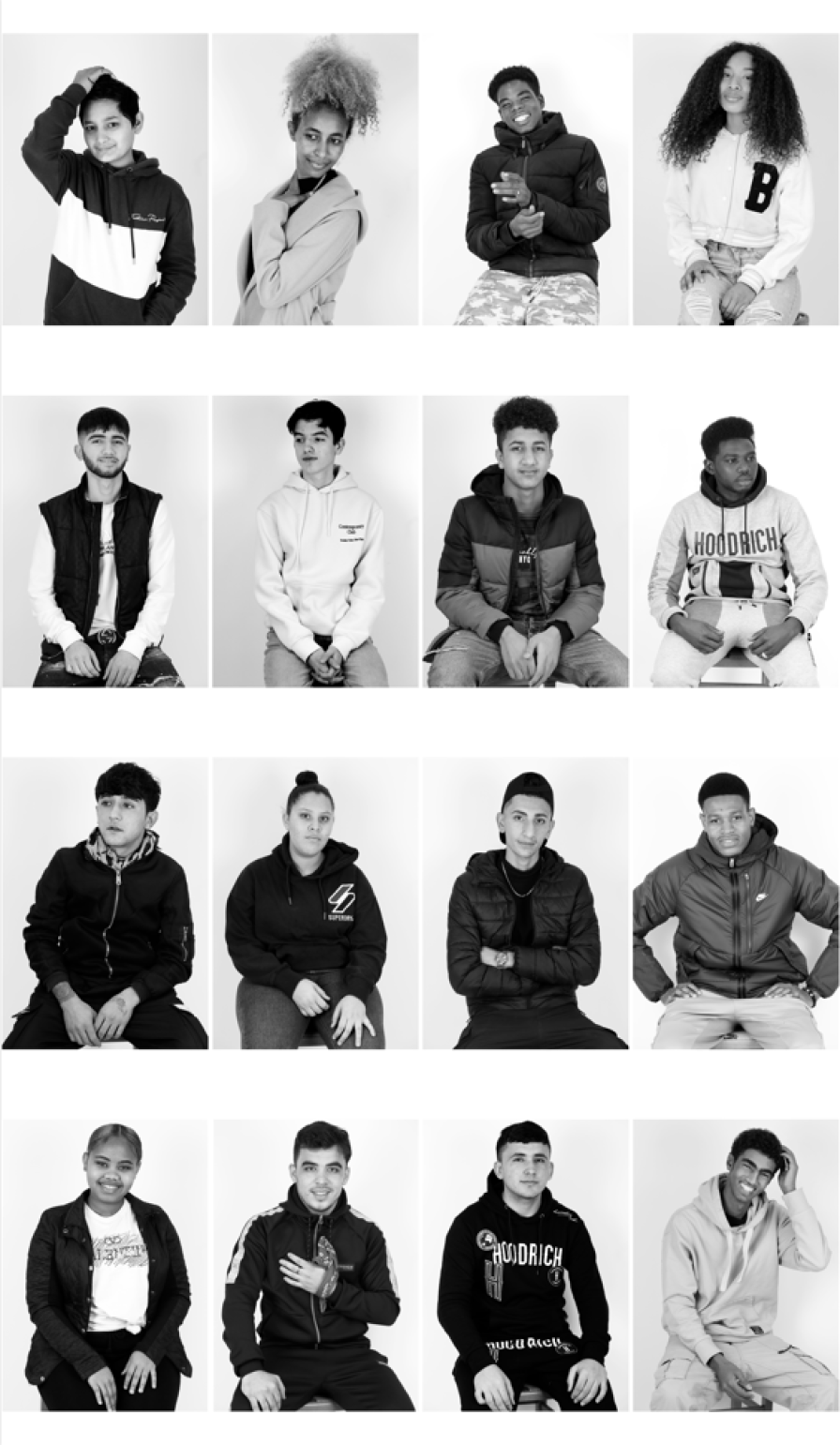
Scope of work
Sonic Minds is an award-winning creative music programme delivered by Lewisham Music and funded by Youth Music and BBC Children in Need. To date this two-year programme has already supported over 300 young people at elevated risk of experiencing mental ill health.
The project combines collaborative songwriting, music production, music technology and drumming workshops facilitated by experienced music practitioners. The music and creative direction of this project has been co-designed and shaped by young people from the outset.
Lewisham Music has worked with a range of education, statutory and voluntary sector partners across Lewisham, Bromley and Bexley, including virtual schools, further education colleges and youth centres. All of these settings are identified as trusted services and safe spaces where care experienced, and displaced young people engage.
The music and stories created by young people are shared with audiences through a ‘sonic brain sculpture’ created by sound artist Gawain Hewitt. The interactive sculpture features the music created by participants from across the programme, the installation has been exhibited in various South London civic and cultural venues.
Underpinning this programme of work is an aim to better understand the connectivity and correlation between music-making and young people’s wellbeing. To help us explore this further Sound Connections and Golsmiths University of London were commissioned as independent evaluation partners.
The Research
Leading music education research charity Sound Connections were commissioned to undertake an independent evaluation of the programme. The evaluation took a qualitative approach to explore the views and experiences of participants, support staff and music leaders to understand if and how Sonic Minds is making progress against the intended outcomes, identifying any barriers to success and making evidence-based recommendations for improvements.
The evaluation was led by research specialists Kayte Cable (Big Leaf Foundation) and Abigail D’Amore (Abigail D’Amore Associates)
Identified outcomes for the programme are:
- To develop young people's wellbeing – creativity, self-efficacy, agency, motivation
- To improve young people's song writing, composition and performance skills through collaborative musical experiences
- To develop opportunities for music tutors at all stages of their professional career to collaborate, share practice and explore new ways of workin
The findings from our evaluation are detailed fully in our Sonic Minds report. Just as important as our evaluation findings are what we have learnt along the way, so we wanted to share some of this with the Youth Music Network.
Participant awareness and agency
Recommendations
- Ensure the project aims are clearly outlined and can be presented to a group of mixed level non-native speakers. Ensure that setting staff are familiar with the project so this can be relayed in advance and provide greater context. Include illustrations or demonstrations of desired final outcome / product where possible. Main aims and proposed secondary benefits to participants (ie improving English, learning a new skill) are helpful to include. Reiterate (and then elicit) these before the start of the project and during each session. Ideally, all participants should be able to articulate (in their native language, if need be) why they are there and what they are aiming to achieve.
- Work with setting staff on how aspects of the project can be integrated into other lessons/sessions (for example lyric writing)
- Ensure the whole group recognises the time frame, including both the length of the overall project and the timings of each session.
- Thank the participants regularly for their engagement and assure them they are important to the project aims.
- Look for opportunities to encourage agency. In later sessions, give participants the choice of warm up activities and give space for them to voice their opinion on how things are progressing.
- If the project is not taking place in college time, allow space for young people to step back from participating without redress.
- Ensure that any newcomer to the group is introduced and integrated and the group are confident about the reasons why they are there.
Space and environment
Recomendations
- Ensure that the space is contained enough to foster a sense of group ownership and familiarity.
- Where possible, make certain that there is space for someone to leave the group without drawing attention to themselves, and that everyone is clear about this being acceptable at the beginning of the session.
- Confidence can be built around newcomers to the group by taking time for introductions and involving them in warm up activities in the main area of the group activity, even if they step onto the sidelines later on.
- Work with setting staff to ensure smooth logistics for running the sessions (i.e. suitable space, not being asked to relocate due to noise etc) to avoid interruptions to the sessions
- Increase focus with music leaders on strategies for building trust and rapport with the young people, particularly during the early part of a project. Meditative activities may be appropriate in some contexts
Evaluation - methods and content
Recomendations
Initially the evaluation involved a paper-based survey that was distributed to young people at the beginning and end of project sessions. As the evaluation consultancy emerged, we worked with the team on the following:
- Revising and shortening the paper-based survey, advising a full explanation of this to young people before use
- Practitioners conducting ‘check ins’ at the beginning and end of sessions inviting a number in response to how young people were feeling.
- Informal interviews with young people conducted by one of the practitioners Arun Janssens who worked with us to devise the questions and compile the case studies.
- A series of prompts for practitioners based on a set of co-created indicators of impact that could be used as a reflective tool following sessions.
- Conducted semi-structured interviews with setting staff.
- The evolved survey was based around five questions and used emojis to record responses. Emojis were chosen as easily recognisable form of communication, which we already know are used widely in communications among displaced young people.
- Differentiation between the two negatives and the two positives was emphasised in language by the use of ‘!’ and bold type, both of which are familiar styles at Entry2-Entry3 level language.
😢 😔 😐 🙂 😍
No! I really No. I don’t Hmmm, I'm Yes, Yes!
don’t agree. agree. in the middle I agree I really do agree
Key learning points
- Evaluations are very often an unknown activity to displaced young people
- It is important wherever possible to ensure the group has some time to build a connection with the people delivering the evaluation. Introductions and their participation in a shared activity can be really helpful
- They have mostly experienced traumatic questioning before and after arrival in the UK; consent should be sought and any refusal to engage should be accepted without countering
- The purpose of the activity should be laid out clearly before consent is sought
Recommendations
- Review the purpose of the evaluation going forward, and limiting data collection to activities that will meet this purpose
- Present and demonstrate the purpose and meaning of the evaluation questions before encouraging use of translator apps, bearing in mind the inconsistencies of translation into some less common world languages
- Ensure the nature and wording of the questions are such that can be demonstrated to a mixed language ability group, so that people are not excluded by a simple lack of vocabulary
- Avoid any question which could trigger wider experiences of the displacement context. Ensure all questions are relevant to the project. Eg. I feel able to use my imagination to solve problems is not a suitable question for this group as they are constantly and painfully aware of their inability to solve the problems conferred upon them by their status and reliance on the state
- Consider restricting the evaluation to:
- Check in / Check outs led by practitioners
- Interviews with young people either conducted by practitioners, Lewisham staff or an external evaluator
- Gather feedback from setting staff – either via short interviews or a feedback form
- If a survey approach was continued to be taken, have the evaluator or activity provider go first as an example of how to fill out the form, and for this demo to show that the “disagreement” boxes can also be ticked
- Build in reflection sessions for the practitioners as a group, to continually review and check practice, and to share strategies for working with displaced young people
Appendix: Toolkit Index
All documents are stored in a Google Drive Folder. This folder contains:
- Original survey with Kayte’s annotations
- Revised survey
- Observation framework / Reflective practice form (word doc and google form)
- Informal questions for young people and guidelines for interviewing displaced young people
- Interview or survey questions for setting staff
- Questions for Sonic Brain audience members


